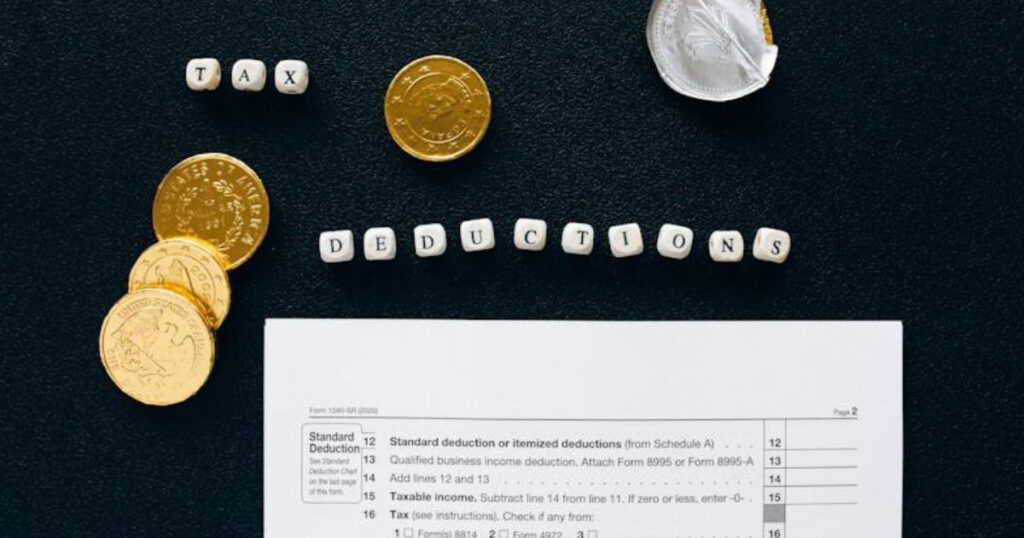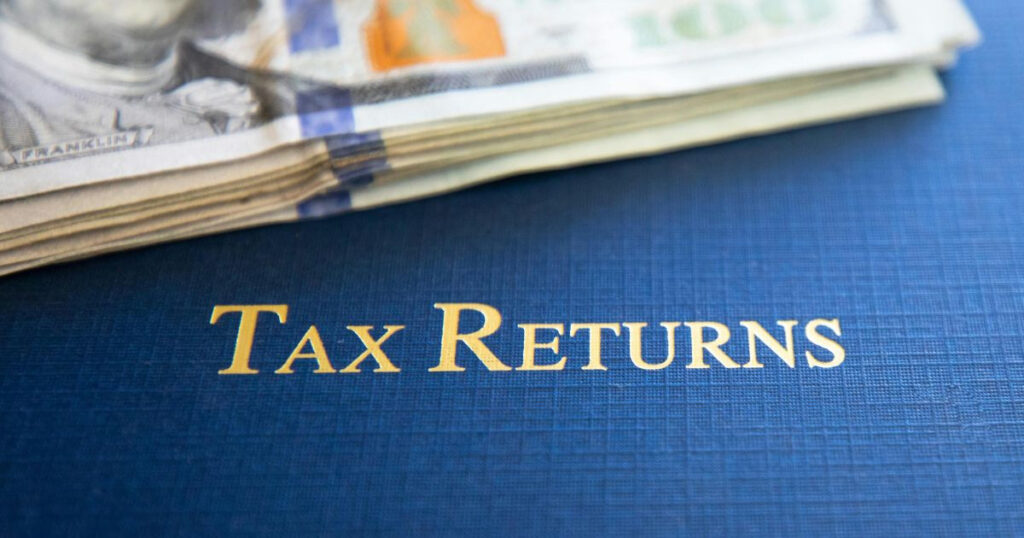
Filing taxes as a single mom might initially seem scary, like trying to solve a jigsaw puzzle with missing pieces, especially if you’re doing it for the first time.
But here’s the good news: Filing taxes doesn’t have to be scary or overwhelming. Filing taxes can help you save money and plan better for your family’s future if you know the right tips.
According to the IRS, over 80% of U.S. taxpayers receive a tax refund, and many single moms get back more in taxes than they expect. This is thanks to credit and special tax rules.
In this article, we’ll break down the best tips on filing taxes in easy-to-understand language. Whether you’re filing taxes as a single mom for the first time or not, this is for you!
Key Takeaways
- Most single moms qualify for Head of Household status, which offers a higher standard deduction and better tax rates than single filer status.
- Take advantage of the Earned Income Tax Credit, the Child Dependent Care Credit, and the Child Tax Credit to increase your refund as a single mom.
- Programs like VITA, user-friendly tax software, and IRS Free File help first-time single moms file accurately without spending much money.
- Reviewing your paycheck withholding can help you save money during the year instead of waiting for a big refund.
10 Tips for Filing Taxes as a Single Mom
- Understand your filing status
- Key tax credits for single moms
- Use the right tax forms
- Choose the best tax filing method
- Pick between standard or itemized deductions
- Know your taxable income and adjusted gross income
- Ensure your child qualifies
- Plan to maximize your tax refund
- Beware of tax scams and mistakes
- File early and get your refund faster
1. Understand your Filing Status
When filing taxes as a single mom, your filing status is one of the important decisions you’ll make. It determines what credits you can get and how much your standard deduction will be.
Most single moms qualify for Head of Household rather than just single filer status. Because the Head of Household comes with a bigger standard deduction and lower tax rates. To qualify, you need to;
- You must have a qualifying child living with you for almost half the year.
- Be unmarried or legally separated on the last day of the year.
- Pay more than half the cost of maintaining a home.
Are you filing as a first-time single mom? Don’t bother, just choose Head of Household if you meet the requirements. It is far better than filing as a single.
2. Know the Key Tax Credits for Single Moms
A tax credit reduces the amount of tax you owe. Some even give you your money back. When filing taxes as a single mom, three credits are very important:
A. Earned Income Tax Credits (EITC)
The earned income tax credits are for people who don’t work and don’t make much money. In 2024, EITC was worth up to $7,830, depending on the number of kids and your income level.
B. Child Dependent Care Credit
Suppose you paid for babysitting or daycare for your child so you could work or look for work. This credit helps cover some of the costs. It could be up to 35% of what you spent on childcare.
To be eligible for this credit, your child must be 12 years old or younger. If they turn 13 during the year, you can only claim the credit for the months they were still 12.
C. Child Tax Credit (CTC)
This credit gives you up to $2000 per child under 17 who is a U.S. citizen, and even if you don’t owe any tax, a part may be refunded to you as cash.
For example, you have four qualifying children. The Child Tax Credits (CTC) can reduce your tax bill by $8000 ($2000 × 4 = $8000).
All these credits make a major difference. Understanding which one you qualify for and claiming them is one of the smartest moves when filing taxes as a single mom.
3. Use the Right Tax Forms

It’s easy to feel lost when you hear terms like “Schedule 8812”, Schedule EIC or “Form 1040”, but don’t worry, they are tools to help you organize your tax information.
When filing taxes as a single mom, you’ll most likely use Form 1040, which is the main tax form for individuals.
To claim the Earned Income Tax Credit, you’ll need Schedule EIC. Also, to claim the refundable part of the Child Tax Credit, you’ll use Schedule 8812.
You don’t have to fill these out by hand if you’re using a tax preparer or tax software. They will guide you through the steps and help you pick the right form automatically.
4. Choose the Best Tax Filing Method

There are several ways to file your taxes, and picking the right method will save time and stress. An electronic file (e-file) is the most efficient and popular amongst individuals.
It’s easier, faster, and ensures your return is sent to the IRS quickly. When you e-file and choose direct deposit, you’ll get your refund within three weeks.
If you’re on a tight budget, you can look into IRS Free File, a program that helps people earning under $79,000 file their federal taxes for free. There are also tax assistance programs.
These programs offer in-person help at no cost. These options are especially helpful when you’re filing taxes as a single mom and want to avoid high fees.
5. Pick Between Standard or Itemized Deductions

One important choice to make is whether to choose the standard deduction or itemized deductions.
The standard deduction is a fixed fee that reduces your taxable income. In 2024, the tax refund is worth $20,800 if you file as Head of Household. Most single moms go with this option because it gives the best result.
Itemized deductions, on the other hand, are used if you have large expenses like mortgage interest, donations, or medical bills, unless your itemized deductions are more than your standard deduction.
It is best to keep it simple and stick with the standard deduction. Making the right decision here can help you save as a single mom and avoid paying more tax than necessary.
6. Know your Taxable Income and Adjusted Gross Income
The two important terms to understand when filing taxes as a single mom are Adjusted Gross Income (AGI) and taxable income. Your AGI is your total income, such as your salary, minus certain deductions like retirement contributions or student loan interest.
This number helps determine your eligibility for credits like the Earned Income Tax Credit and the Child Tax Credit. Your taxable income is what’s left after deductions.
It’s the final number the IRS uses to know how much tax you owe. The lower AGI and taxable income you have, the more credit and less tax you receive.
7. Ensure Your Child Qualifies
In order to claim child benefits, your child must meet the child qualifying requirements. This means they must be your biological child, adopted child, sibling, or even grandchild.
Your child must be under the age of 17 for the Child Tax Credit and beyond, and must live with you for almost half the year. Also, the child shouldn’t provide for more than half of their support.
Meeting these rules means that you can claim them for dependent exemptions and claim the credit you and the child deserve.
8. Plan to Maximize Your Tax Refund
Do you want to save money as a single mom for the future? A little planning can go a long way. Start by keeping all your tax documents in one place, like W-2s and letters from the IRS.
Then check your paycheck withholding with your employer to make sure enough tax is taken out. This avoids you owing money at tax time.
Also, using tax software can make everything simpler. It will help you catch every deduction, avoid errors, and make the process seamless, especially if you’re filing as a first-time single mom.
9. Beware of Tax Scams and Mistakes

Unfortunately, tax seasons bring out scammers. If someone calls you pretending to be the IRS and demands payment, hang up. It’s a scam. The IRS never calls to ask for payment over the phone.
Also, take a few minutes to double-check your tax return. Make sure your social security numbers and your child’s information are correct, and ensure you claim all the credits you qualify for.
Small mistakes can delay your payments or cause you to lose out on the money you deserve when filing taxes as a single mom.
10. File Early and Get Your Refund Faster

If you’re looking forward to a refund, filing earlier would mean you’ll get it sooner. The IRS starts accepting returns in January, and early filers start getting their refunds before the busy season hits.
Choosing direct deposit or electronic filing(e-file) will speed things up even more. Many single moms receive their refunds in as little as 14 to 21 days.
So don’t wait until May. File early and use that refund to sort your bills, buy groceries, and even start up a small savings plan.
Conclusion on Filing Taxes as a Single Mom
Filing taxes as a single mom doesn’t have to be overwhelming. In fact, with the right tool and information, it can be a chance to boost your finances and take care of your kids.
Ensure you choose the right filing status; Head of Household is usually the best option. Use tax credits like the Child Tax Credit, EITC, and Child Dependent Care Credit to your advantage.
Also, know your Adjusted Gross Income, use the right tax forms, and pick the best filing method for your situation. Preferably, electronic filing with direct deposit.
Tax programs like IRS Free File can help you file for free. And when in doubt, don’t hesitate to ask for help. You’re doing an amazing job raising your child and managing your finances.
With these tips, filing taxes as a single parent will feel less stressful and more like a win for you by reducing the cost of raising your kids and providing much-needed financial relief for you.
Frequently Asked Questions
1. What is the Best Filing Status for a Single Mom?
Head of Household is the best filing status for a single mom, especially if you take care of your child and provide at least half the support.
2. What is the Maximum Amount to Qualify For a Child Tax Credit?
The maximum you can get is $ 2,000 per child. But the actual amount depends on your adjusted gross income and filing status.
3. Can I Get Money as a Single Mom?
Yes, you can. The Temporary Assistance for Needy Families (TANF) offers cash assistance to low-income families. The amount varies by state; for example, in some states, it might be around $200 to $700 per month for a single mom with one child.
4. What is the Quickest Way to Get Tax Returns?
The quickest way is to e-file your tax returns. According to the IRS, e-filers should get their refunds within 21 days compared to up to eight weeks with paper work.